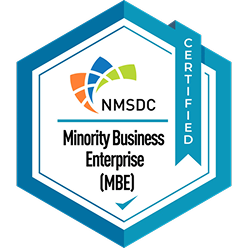
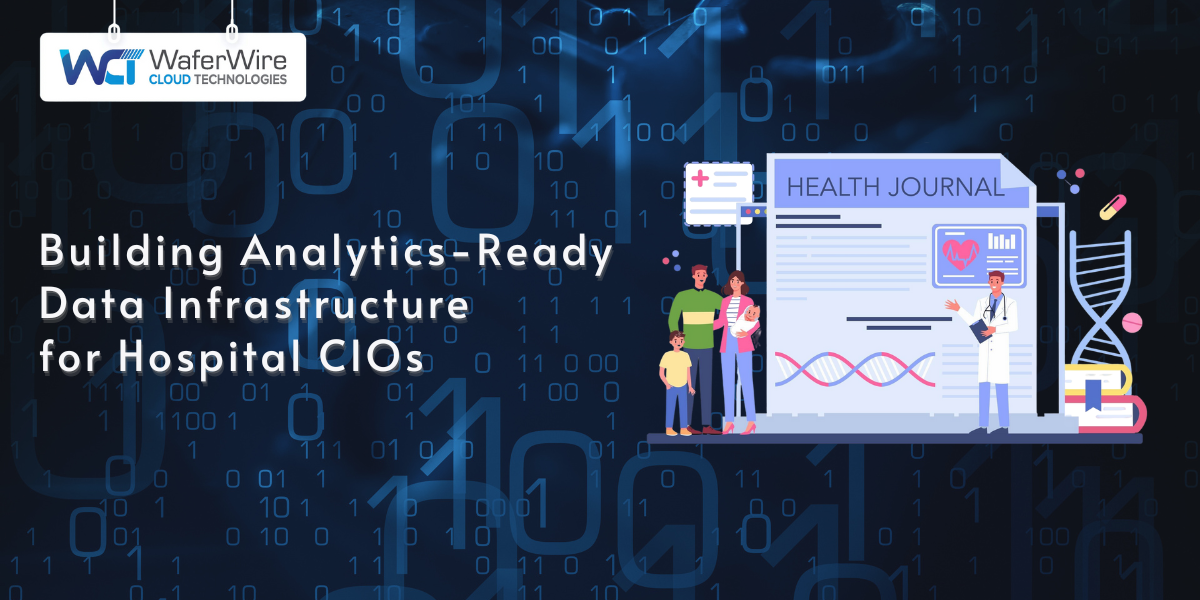
The increasing complexity of healthcare data presents a significant challenge for hospital Chief Information Officers (CIOs), who must strike a delicate balance between operational efficiency and improving patient care.
This blog explores the pivotal role CIOs play in developing and managing the data infrastructure that is essential for informed decision-making, streamlined workflows, and improved patient care.
Healthcare data is generated from a wide array of sources, creating vast silos of information that can limit the ability to integrate systems and extract meaningful insights. This fragmentation of data represents a significant barrier for healthcare organizations looking to become truly data-driven.
Hospitals generate several types of data, each serving different functions:
Despite the growing reliance on these diverse data streams, healthcare systems face significant challenges in accessing and integrating data, such as:
With a clear understanding of the landscape, let's examine the essential components needed to establish an analytics-ready data infrastructure for hospitals.

Building an analytics-ready data infrastructure is crucial for healthcare organizations seeking to improve patient outcomes and optimize operational efficiency.
To achieve this, CIOs must focus on key elements such as data storage, integration, governance, and security to ensure smooth interoperability and regulatory compliance.
Hospitals require scalable, flexible data storage solutions that can accommodate a diverse range of data types, including structured, semi-structured, and unstructured data.
Solutions such as hybrid cloud models offer flexibility and scalability, combining cloud storage with on-premises systems.
These solutions support a variety of data types, ensuring that hospitals can manage large volumes of data without compromising security or accessibility.
Seamless integration with EHRs is essential for creating a unified patient view. Standards like FHIR (Fast Healthcare Interoperability Resources) and HL7 are fundamental in ensuring that data can flow between disparate healthcare systems in a structured and meaningful way.
Hospitals must adhere to HIPAA, HITECH, and other compliance regulations. Establishing data governance frameworks ensures that data is accurate, consistent, and securely managed.
Securing patient data is essential not only for regulatory compliance but also for building trust with patients and safeguarding sensitive health information.
Hospitals must implement:
Now, let’s examine the tools and technologies that can help accelerate the implementation of healthcare data infrastructure.
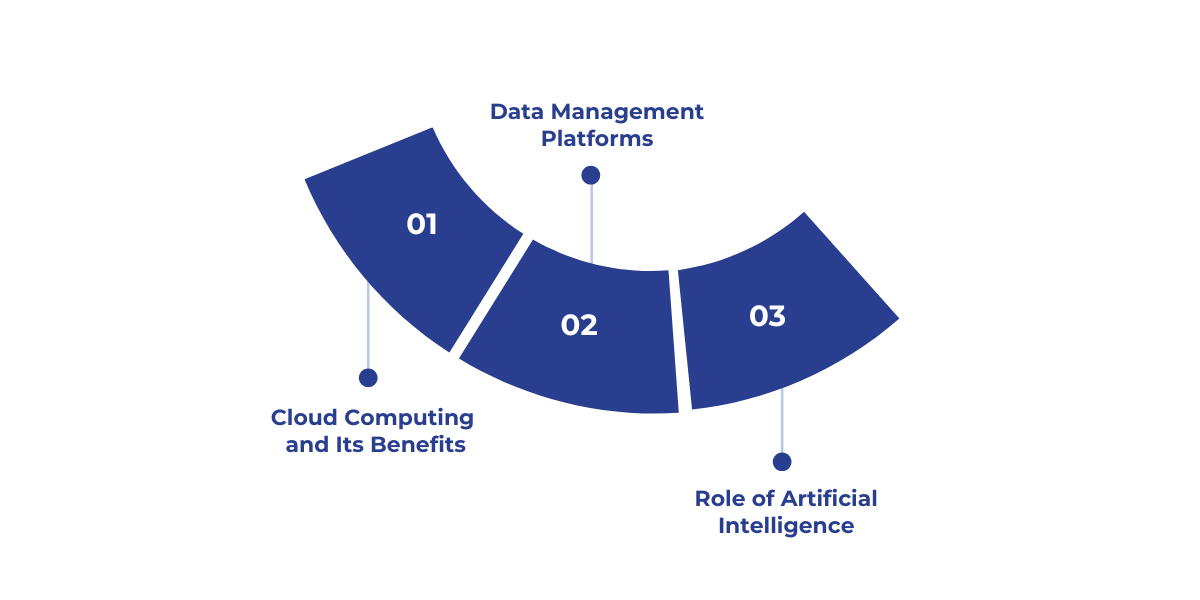
Building a robust data infrastructure in healthcare requires adopting tools that streamline data integration, processing, and analysis. Cloud computing, machine learning, and data management platforms are essential in transforming raw healthcare data into actionable insights.
These technologies enable hospitals to boost efficiency, enhance decision-making, and improve patient care outcomes.
Cloud computing enables hospitals to scale their data storage and processing capabilities quickly and cost-effectively, eliminating the need for significant capital investment in on-premises infrastructure.
Leading cloud platforms, such as Microsoft Azure, provide healthcare-specific solutions that meet stringent industry standards, including HIPAA and HITECH, ensuring compliance and security.
Data management platforms, such as Arcadia, Health Catalyst, and IBM Watson Health, play a crucial role in enabling hospitals to manage and integrate large, disparate datasets.
These platforms support predictive analytics and clinical decision support, enabling healthcare organizations to extract actionable insights from complex data and enhance patient care while optimizing hospital operations.
Artificial intelligence (AI) and machine learning (ML) technologies are increasingly being used to automate tasks such as data cleaning, identify hidden patterns, and enhance diagnostic accuracy.
AI and ML tools can predict patient outcomes, optimize resource allocation, and personalize care, significantly contributing to improved hospital operations and more effective treatment plans for patients.
To put this into action, it's important to follow a structured approach when implementing a robust data infrastructure across your organization.
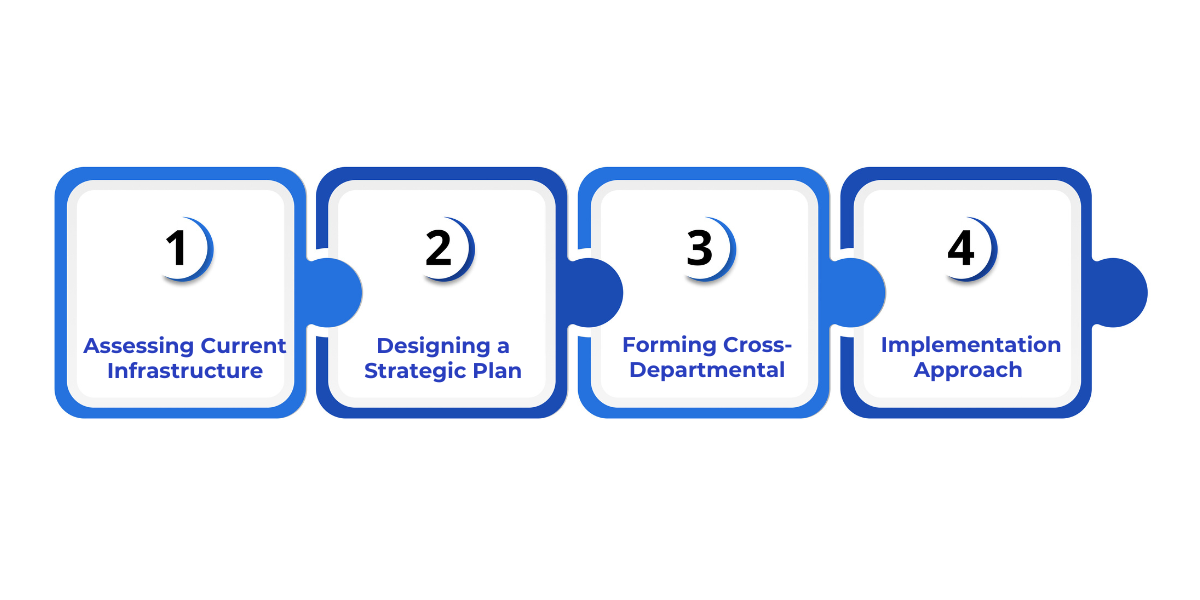
Building an analytics-ready data infrastructure is a multi-step process. CIOs must begin by assessing their current systems, identifying gaps, and then implementing an actionable roadmap to address these gaps.
The process should be approached in phases to ensure gradual, manageable improvements.
Begin by conducting a thorough audit of existing systems and infrastructure. Identify where there is a lack of integration, inefficiencies in data handling, or security vulnerabilities.
Develop a strategic plan with clear, well-defined short-term and long-term objectives. Focus on improving interoperability, ensuring compliance, and optimizing data storage.
Data infrastructure projects require collaboration between clinical teams, IT, and administrative units. Cross-departmental teams ensure that the infrastructure meets all hospital requirements and that all stakeholders are aligned on goals.
Start with high-impact, low-complexity projects that show quick wins. Gradually expand the scope of the project, integrating more complex data sources and technologies as the system matures.
As you implement infrastructure, maintaining high-quality data is crucial. Here’s how to ensure data quality remains consistent and actionable.
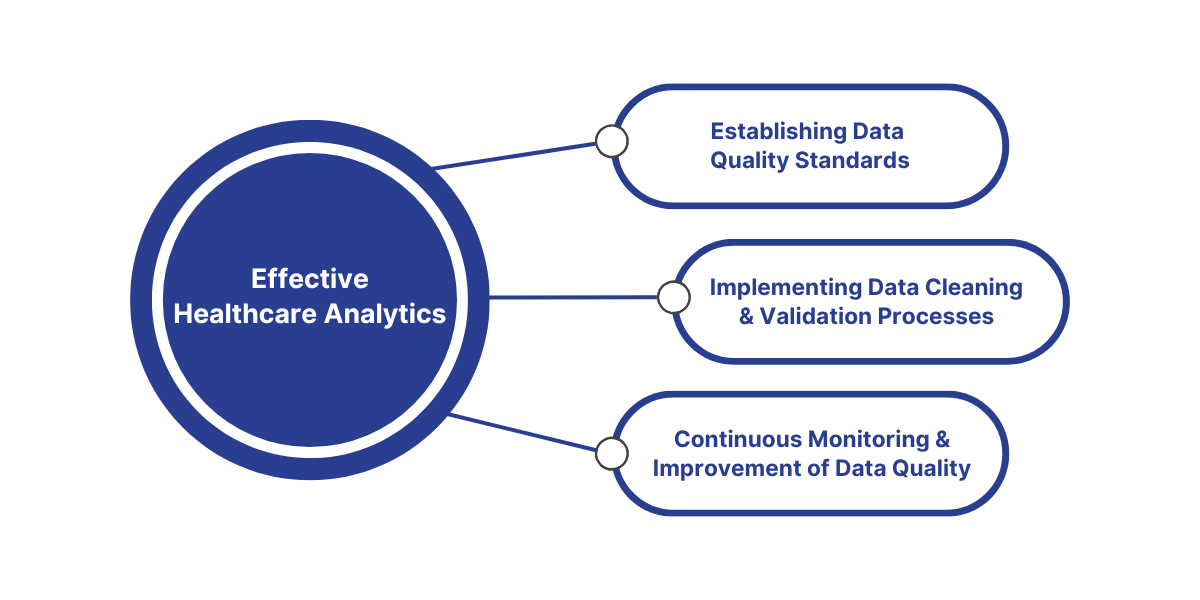
The effectiveness of healthcare data analytics relies heavily on the quality of the data itself. To ensure that data systems remain reliable and actionable, it's crucial to establish data quality standards and implement continuous monitoring.
This helps maintain the integrity of clinical, operational, and patient-reported data, ensuring that insights drawn from it are accurate and reliable.
Define and enforce clear standards for data accuracy, consistency, and completeness across all systems to ensure reliable data. These standards should cover clinical, operational, and patient-reported data to ensure uniformity and reliability.
Utilize automated tools to clean and validate incoming data. These tools help identify discrepancies in real-time, resolving inconsistencies and ensuring that data remains accurate and actionable.
Data quality should be constantly monitored, with ongoing improvements based on regular feedback from stakeholders. Establish key performance indicators (KPIs) to track data quality and ensure it consistently meets the set standards.
After establishing the infrastructure, it’s vital to understand how healthcare data analytics directly impacts patient outcomes and operational efficiency.
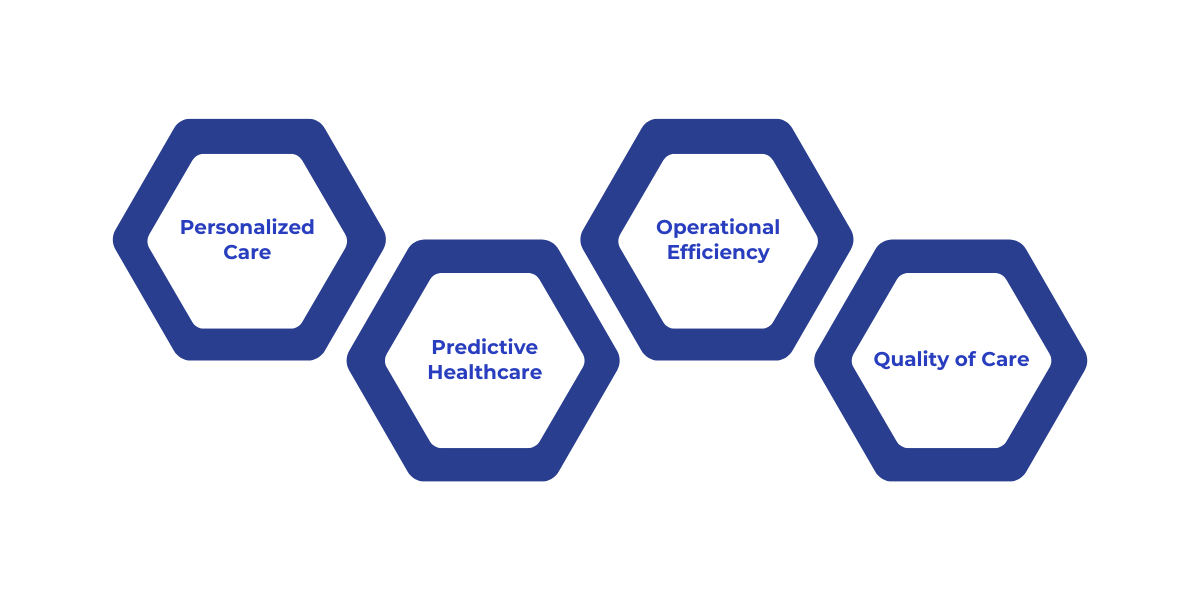
Healthcare data analytics plays a pivotal role in improving patient outcomes and operational efficiency. By analyzing vast amounts of healthcare data, organizations can uncover patterns, predict trends, and make informed decisions that lead to better care delivery and healthier patients.
By analyzing individual patient data, healthcare providers can tailor treatments to meet the specific needs of each patient.
This personalized approach increases the chances of successful outcomes, as treatments are tailored to individual factors such as medical history, lifestyle, and treatment response.
Analytics can identify patterns in historical data to predict future health events, such as disease outbreaks or patient deterioration.
This predictive power enables healthcare systems to take proactive measures, reducing complications, lowering healthcare costs, and saving lives.
Data analytics optimizes hospital operations by streamlining workflows and improving resource allocation.
Predictive models can forecast patient volume, helping hospitals adjust staffing levels and manage resources more efficiently. This results in faster care and better overall hospital performance.
Continuous monitoring and benchmarking against industry standards help improve the quality of care.
By tracking patient outcomes and measuring the effectiveness of treatments, healthcare organizations can pinpoint areas for improvement and ensure ongoing enhancement of care delivery.
Effective implementation and integration of data systems requires strong leadership. Let’s look at how Hospital CIOs manage the change process.
Hospital Chief Information Officers (CIOs) play a crucial role in successfully implementing analytics-ready data infrastructures.
They not only oversee the technological transition but also manage cultural shifts, ensuring that the organization adopts a data-driven approach to decision-making while overcoming both technological and cultural barriers.
Advancements in integration and technology will drive the future of healthcare data analytics. Hospitals that invest in scalable, analytics-ready infrastructures will improve patient outcomes, optimize operations, and reduce costs.
With the rise of FHIR standards and edge computing, systems will be able to exchange data more effectively, enabling real-time diagnostics. AI-powered analytics and cloud-first strategies will further streamline operations and enhance care.
To implement a strong data infrastructure that delivers measurable results, WaferWire can guide your organization through the implementation of real-time data management, predictive analytics, and cloud solutions that directly improve patient care and hospital efficiency.
Contact us for a detailed consultation on how we can help your healthcare system achieve the power of data analytics.
Q: What are the primary challenges hospitals face when integrating healthcare data?
A: The main challenges include data fragmentation, with clinical, operational, and patient-generated data often housed in separate systems. Additionally, unstructured data, such as clinical notes or imaging, is difficult to process, limiting actionable insights. Ensuring interoperability across various platforms remains a significant hurdle.
Q: How can CIOs ensure hospital staff adapts to the data-driven culture?
A: CIOs can promote data literacy by offering targeted training programs, ensuring that both clinical and administrative staff understand how to utilize data analytics tools. This includes making tools accessible and demonstrating their value in improving patient care and hospital operations.
Q: What role does artificial intelligence (AI) play in healthcare data infrastructure?
A: AI helps automate processes such as data cleaning, identifying patterns, and predicting patient outcomes. By leveraging machine learning, hospitals can optimize resource allocation, personalize care, and enhance diagnostic accuracy, ultimately improving operational efficiency.
Q: How can hospitals maintain data security while integrating new technologies?
A: Hospitals must implement robust encryption for data at rest and in transit, enforce access controls, and adopt a zero-trust security model. These steps ensure that patient data remains secure even as technologies like AI and cloud computing are integrated into hospital systems.
Q: What’s the role of cloud computing in modernizing healthcare data infrastructure?
A: Cloud computing allows hospitals to scale their data storage and processing capabilities quickly without heavy capital investment in on-premises infrastructure. Leading platforms offer healthcare-specific solutions, ensuring compliance with HIPAA and improving overall data accessibility and security.
